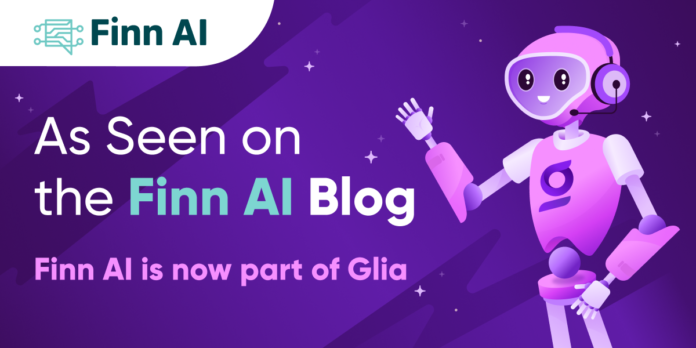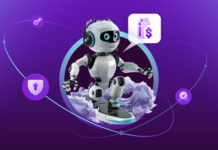This post originally appeared on the Finn AI blog, which is now part of Glia.
“Ten years ago, we were still debating if consumers would want to bank on mobile; today, it’s the most popular channel for many Americans,” said Kirk Drake, President and Co-Founder of CU 2.0 and author of Financial, a book on how AI will impact credit unions. What this really means is that change is not linear, and dramatic leaps in technology over a short period of time are quite commonplace. While Conversational AI has for quite some time felt out of reach for all but the largest institutions, they are quickly becoming not just accessible to regional and community financial institutions, but will soon become a necessity to connect with customers and meet their needs.
The Importance of Racing to Digital Innovation
As Kirk Drake explains, most institutions tend to fall on a bell curve of technological advancement: while the majority of banks and credit unions have an ‘okay’ or ‘good’ amount of advanced digital tools, Drake says that “the people who win this race are the ones who manage to not get 80% [of the way there], but 100% and get there sooner than everybody else.” Embracing innovative technology as quickly as possible, such as a full service model integration of AI or maximizing the number of transactions your digital tools can cover, will put a bank or credit union in a position to become trendsetters and top-tier technological performers.
Truist Momentum: Financial Literacy Through AI-Powered Chat
Incorporating new technologies into your service model can serve as much more than just an attractive bullet-point: the capabilities of AI can assist users with problems as complex as financial education. Truist Momentum, a program created by Truist Financial with the goal of empowering and educating people towards better financial health, sought out an AI-Powered chatbot to make their goals even easier to achieve.
“We often heard from our users that the program is great, but what if I have a specific question?” mentions Susanna Chesney, SVP and Product Development Lead for Truist, “We knew that users sometimes needed help, but we didn’t have the resources to have an actual person take a user’s call or answer an email. So we thought, how do we leverage technology to solve this inability of our users to connect with an actual person: so that’s where Finn AI came in.”
Truist Momentum uses their AI-Powered Chatbot, named ‘Mo,’ to help guide users through the site and provide answers to their specific financial literacy questions. While chatbots have historically been primarily used to answer more simple FAQ style questions, Mo is providing users with a level of financial guidance that one could hope to receive from a real, live human agent.
United Federal Credit Union: Crawl, Walk, Run
The capabilities of AI-Powered Chat are increasing rapidly: what can start as a small, simple way to automatically answer questions can become a full-on virtual assistant, capable of providing intelligent and personalized advice and information. For United FCU, taking their chatbot implementation from this first initial stage to a more advanced form was a purposely gradual, step-by-step process.
“We wanted to start simple,” says Warren Pattison, Head of Innovation and Emerging Technology at United FCU, “we developed a three-step process… we wanted to go from crawl, where it was those very simple questions, to walk, which was more transactional in nature such as ‘what’s my balance?’… and then, from a run standpoint, we wanted to get it into a more conversational space.” The true strength of Conversational AI is not in its ability to automate simple questions or ordinary transaction processing, but the very nature of being ‘conversational.’ The ability to analyze user spending habits, proactively engage with them, and offer personalized advice and suggestions, is both where AI-Powered Chat is at its most powerful and where United FCU wishes to be.
Stay Ahead of the Curve
Conversational AI, just like many other technologies before it, is undergoing a rapid evolution both in ability and accessibility. Not only are its capabilities rapidly expanding, able to perform much more complex tasks with many more use-cases, AI-Powered Chat is also even more widely available to institutions of varying size and budget. As technology marches on, it’s imperative that a bank or credit union does not get left behind: those that find themselves playing catch-up with new tech will also find themselves at risk of losing their share of the market to those that can stay ahead.





